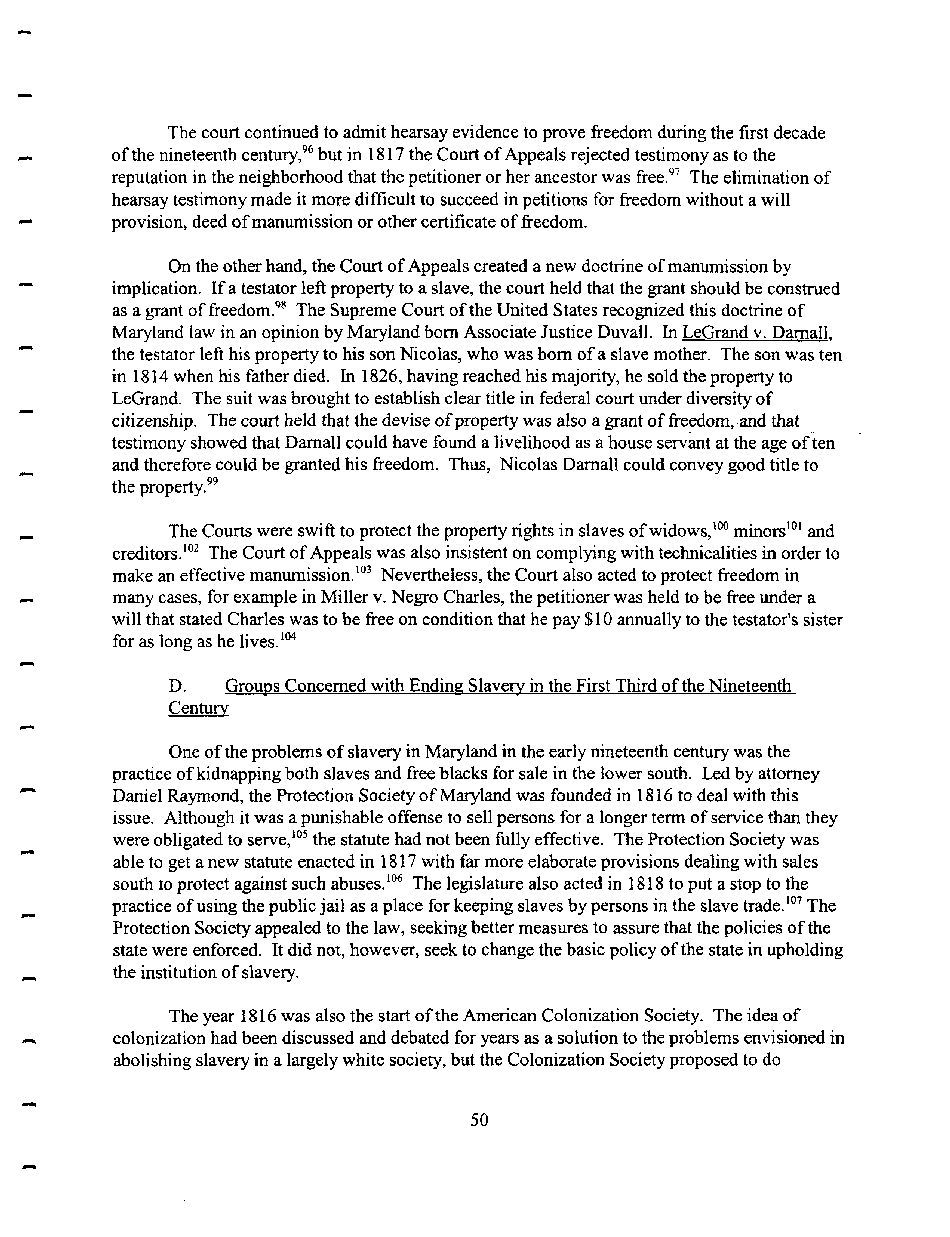|
The court continued to admit hearsay evidence to prove freedom during the first decade
of the nineteenth century,96 but in 1817 the Court of Appeals rejected testimony as to the
reputation in the neighborhood that the petitioner or her ancestor was free.97 The elimination of
hearsay testimony made it more difficult to succeed in petitions for freedom without a will
provision, deed of manumission or other certificate of freedom.
On the other hand, the Court of Appeals created a new doctrine of manumission by
implication. If a testator left property to a slave, the court held that the grant should be construed
as a grant of freedom.98 The Supreme Court of the United States recognized this doctrine of
Maryland law in an opinion by Maryland born Associate Justice Duvall. In LeGrand v. Darnall.
the testator left his property to his son Nicolas, who was bom of a slave mother. The son was ten
in 1814 when his father died. In 1826, having reached his majority, he sold the property to
LeGrand. The suit was brought to establish clear title in federal court under diversity of
citizenship. The court held that the devise of property was also a grant of freedom, and that
testimony showed that Damall could have found a livelihood as a house servant at the age often
and therefore could be granted his freedom. Thus, Nicolas Damall could convey good title to
i QQ
the property.
The Courts were swift to protect the property rights in slaves of widows,100 minors101 and
creditors.102 The Court of Appeals was also insistent on complying with technicalities in order to
make an effective manumission.103 Nevertheless, the Court also acted to protect freedom in
many cases, for example in Miller v. Negro Charles, the petitioner was held to be free under a
will that stated Charles was to be free on condition that he pay $10 annually to the testator's sister
for as long as he lives.104
D. Groups Concerned with Ending Slavery in the First Third of the Nineteenth
Century
One of the problems of slavery in Maryland in the early nineteenth century was the
practice of kidnapping both slaves and free blacks for sale in the lower south. Led by attorney
Daniel Raymond, the Protection Society of Maryland was founded in 1816 to deal with this
issue. Although it was a punishable offense to sell persons for a longer term of service than they
were obligated to serve,105 the statute had not been fully effective. The Protection Society was
able to get a new statute enacted in 1817 with far more elaborate provisions dealing with sales
south to protect against such abuses.106 The legislature also acted in 1818 to put a stop to the
practice of using the public jail as a place for keeping slaves by persons in the slave trade.107 The
Protection Society appealed to the law, seeking better measures to assure that the policies of the
state were enforced. It did not, however, seek to change the basic policy of the state in upholding
the institution of slavery.
The year 1816 was also the start of the American Colonization Society. The idea of
colonization had been discussed and debated for years as a solution to the problems envisioned in
abolishing slavery in a largely white society, but the Colonization Society proposed to do
50
�
|

